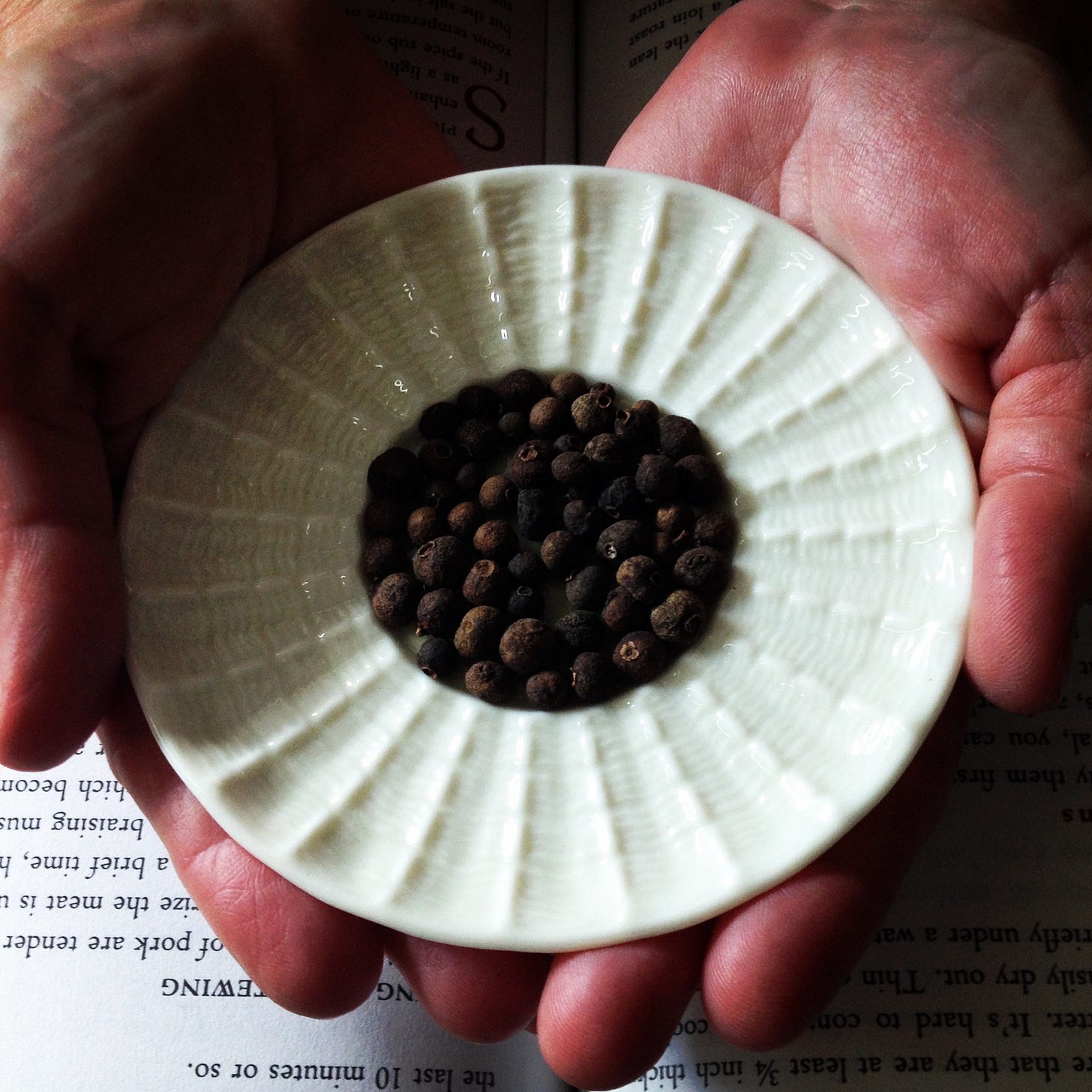When Columbus returned to the New World the second time around his ship's physician, Diego, sighted the island of Jamaica, a place where allspice trees grow. Columbus, although a fantastic sailor, had a habit of naming things erroneously based upon anything it reminded him of back in Europe. Chilies got called ‘peppers’ for the tame bell peppers they vaguely resembled and Allspice berries got called pimiento … Spanish for pepper because it looked like black pepper to him. The confusion to this day never seems to end. The fact that allspice tastes nothing like pepper didn't trouble Columbus. There are some historians that have dubbed the man we have a national holiday named for as “Columbus, the Unwitting”. Such are the dualities of life some of the famed face.
The great search for spices in what was once dubbed “The New Spain” … before the more permanent name of “America” came along was not as raging of a success as we may think. Columbus’ excuses to the King and Queen were wearing sorely on the monarchs. He returned with samples of gold which helped a bit but the errant Admiral was losing his credibility. It was also true that he left it to others to do the spice finding. One of the spice hunters back then was the ‘conqueror of the Aztecs’ … one Hernán Cortés. Though he did deliver a fortune in gold to the royals he sent a slew of letters of apology for his failure to come up with the spices of India that Europe was ‘Jonesing' for. In his fifth letter of 1526 he sought for some understanding ... if not outright pity. He vowed, “I will undertake to discover a route to the Spice Islands and many others. If this should not prove so, Your Majesty may punish me as one … who does not tell the truth to his King”!
Some maintain that allspice was the most important spice to ever come out of the New World. Allspice is also known as ‘bayberry’ and ‘Jamaican pepper’ in some places. This aromatic spice is obtained from a single source despite it's name. It is the berry of a West Indian tree we seek. The fruit is allowed to grow to full size, but it is picked unripe and then dried in the sun. After drying, the berries are pea-sized and brown.
Perhaps what has become the most popular usage of allspice's flavor are in ‘jerked’ dishes. True “Jerk Cookery" not only relies on the berries, but also the logs of the allspice trees for the fuel. The escaped slaves of the Spaniards during the Maroon wars that the Spanish fought with the British would capture the wild pigs and sort of steam, smoke and grill them after wet marinating them in seasoning pastes which also included allspice berries. In our home we use a spice rub for the ribs we named, “Born On the 4th of July Baby Back Ribs”. They are featured in our cookbook, “My Key West Kitchen”. Despite the hybrid qualities and capacities of the allspice we include there are also spices like cumin, paprika, cayenne, anise seed, smoked pimentón and even other flavors contributed from kosher salt, dark brown sugar, ground ginger, chipotle chilies and garlic.
I don’t believe in ‘having too much of a good thing’ when it comes to barbecue. And we would not have barbeque if it weren’t for the explorations into the New World.
Ahhh…. the pleasures of Barbeque!
But …. that’s another show.
I’m Norman Van Aken and that’s my Word on Food ©.
If you have signed up on my Substack thank you. If you are new to Substack you can subscribe to mine on Substack for free at NormanVanAken1. Please see my #linkinbio Paid subscribers get everything, (natch) plus a mix of categories.
My website www.normanvanaken.com
~~~~~~~~~~~~~~~~~~~~~~~~~~~~~~~~~~~~~~~~~~~~~~~~~~~~~~
© 2024 Norman Van Aken
JESSICA'S JERK SEASONING PASTE
A Jessica Harris recipe
Yield: 4 Cups
4 Tablespoon minced ginger
6 scotch bonnets
68 cloves minced garlic
2 red onions, roughly chopped
1 1/2 Cups sugar
1/2 Cup dark rhum
1/2 Cup chopped pimento
2 teaspoons ground fresh nutmeg
2 “ “ “allspice
1 teaspoon salt
1 “ cracked black pepper
Combine all together and process. Rub on the raw chicken (etc.) for at least 3 hours before cooking.



